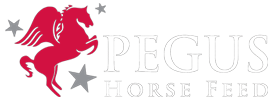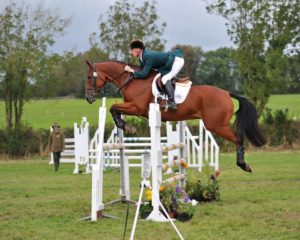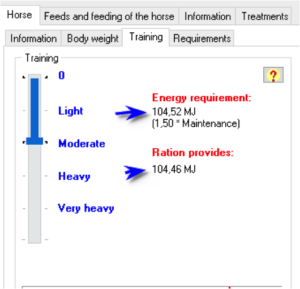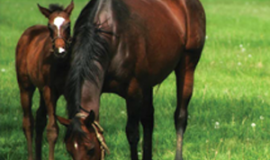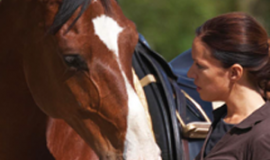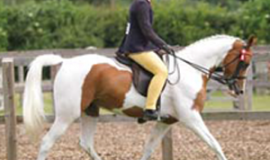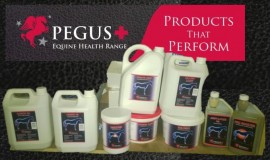How we define the level of exercise for your horse?
The energy requirement of exercising horses is mainly depending on the horse’s body weight and the amount of exercise. However, many find it difficult to define the average amount of exercise over a given period, eg over one or two weeks.
When using Pegus PC-Horse to set up rations for exercised horses, you will have to provide information about the average level of exercise or training. You can select the pre-defined levels by double-clicking on the blue text or moving the slider along the scale (see figure). Initially it is recommended to select the pre-defined level you think fits your horse. You can later adjust the training level as you gain experience with the program.
For a given horse, you can inspect the training level by doing the following: Define the horse in the PC-Horse program. If the horse is maintaining a steady body condition on it’s present ration, we can assume that the energy content of the ration is close to the actual requirement. Enter the present ration into PC-Horse and go to the training window (see picture). Here you see how much energy the present ration provides. Then you can use the blue slider and adjust the level of training until the Energy requirement (upper blue arrow) is equal to the energy that the ration provides (lower blue arrow).
It is important to closely monitor any changes in the horse’s body condition. If the horse puts on weight, the training level is set too high. If the horse looses weight, the training level has to be increased. Then the rations have to be adjusted according to the new training levels.
The logic behind this is:
When the training level is set too high, Pegus PC-Horse calculates a high energy requirement, higher than the horse needs, and the ration will provide too much energy. The result is that the horse grow fat.
If the training level is set too low, Pegus PC-Horse calculates the energy requirement to be too low, and the ration calculated gives to little energy, and the horse looses weight.
Some general advice:
Maintenance (0): No training.
Light training: Energy requirement increased by 25%. Recreational riding or driving. Beginning of training programs.
Moderate training: Energy requirement increased by 50%. More active recreational riding or driving. Dressage and show jumping, distance riding. Lower eventing and other activities.with higher intensity.
Heavy training: Energy requirement increased by 75%. For trotters, show jumpers, distance riding 3 Day Eventing and for other types of horses that are trained heavily several times per week.
Very heavy training: Energy requirement increased by 100%. For thoroughbred race horses and heavily trained standardbred trotters.
